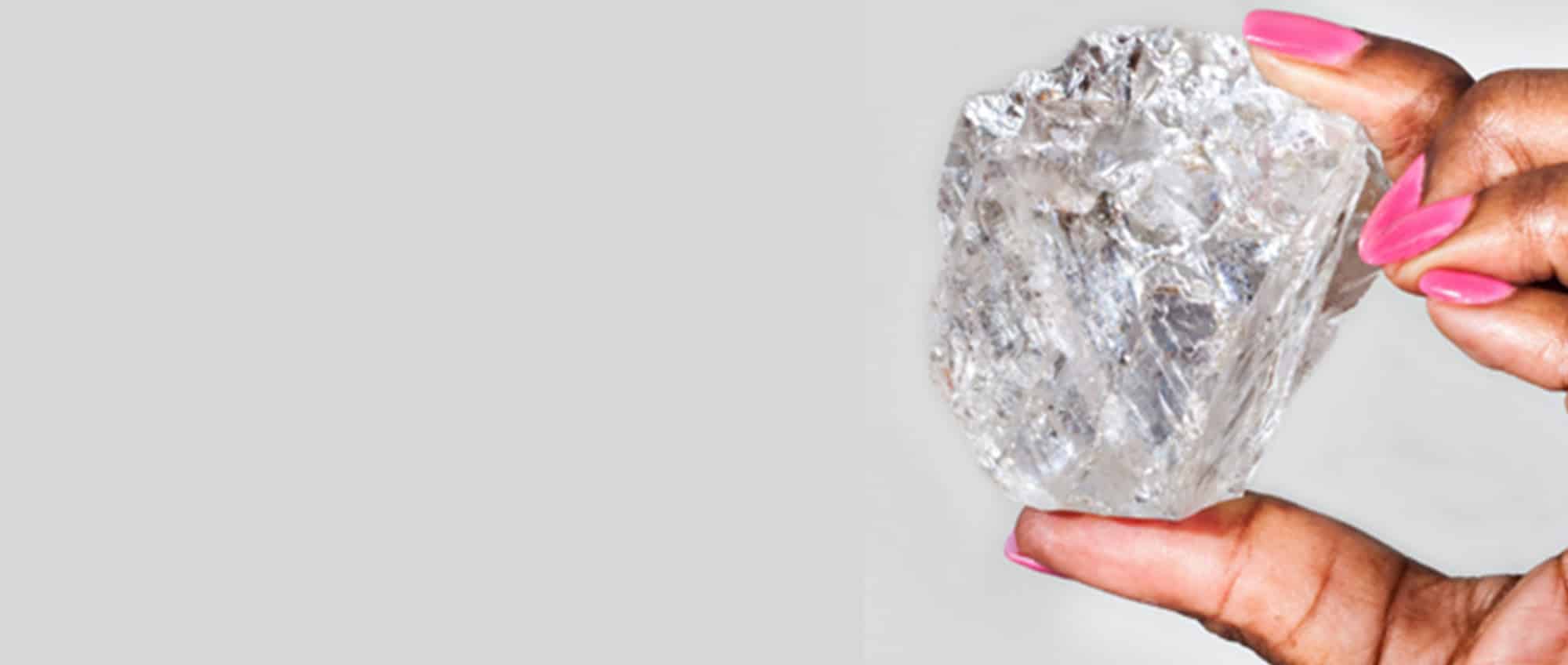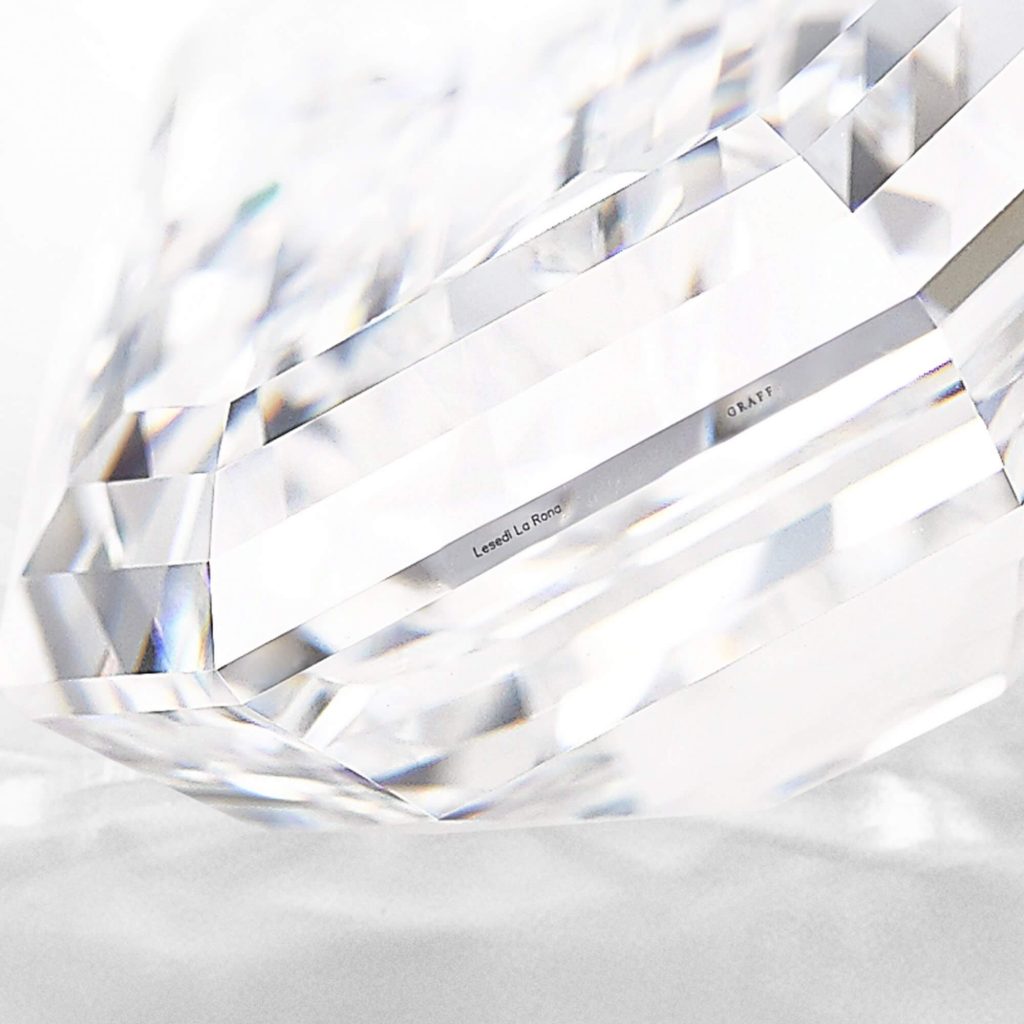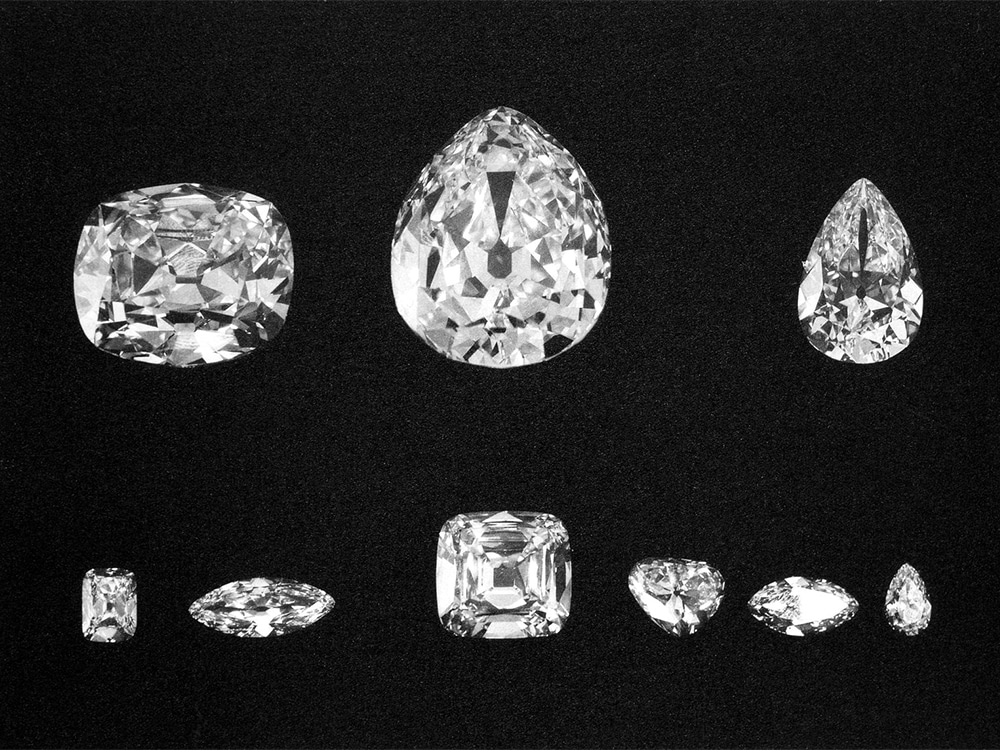Blog
Home » Diamonds blog » SINGLE ROUGH DIAMOND TO YIELD 67 POLISHED GEMS
Focus on

The stone’s owner, Graff Diamonds, which purchased the rough diamond in 2017 for $53 million, made the strategic decision to forgo polishing an exceptionally large diamond, possibly in excess of 700 or 800 carats, and rather to maximize profit by cutting a large number of high-quality gems.
At this point in time, Graff is already offering about 30 polished diamonds from the tennis ball-sized Lesedi La Rona, among them an 11.12 carat D-flawless oval-cut stone and a 6.06-carat D flawless cushion cut gem. All the polished diamonds produced will be D-color and of exceptional clarity, the company has said.
The largest stone in the collection, a more than 100-carat polished diamond, is still being processed and has not yet been publicly displayed.
With their having been produced from the second largest gem-quality rough stone ever discovered, the brand-value of the offspring of the tennis ball-sized rough diamond is not being overlooked. Certified by the Gemological Institute of America, each Lesedi La Rona diamond will be laser inscribed on its girdle with the words “GRAFF” and “LESEDI LA RONA,” and also a unique GIA number, authenticating it unique origin.
BOTSWANA ‘S MOST ABUNDANT PRODUCER OF LARGE DIAMONDS
The Karowa mine, where the Lesedi La Rona was mined, is Botswana’s most abundant producer of spectacularly large diamonds. In just this past year, the mine in the north-central part of the country offered up a 472-carat light brown rough diamond and a 327-carat white, gem-quality stone.
Lucara has originally intended selling the Lesedi La Rona at an auction by Sotheby’s in 2016, but it was removed from the sale when it failed to achieve its reserve price of $70 million.
After the eventual sale to Graff, Lucara’s president said the price paid by the London-headquartered jewelry company was more than the highest bid received at an unsuccessful auction a year earlier.
Lucara has gone out of its way to promote the Lesedi La Rona, including conducting a competition in Botswana to name the giant stone. Tens of thousands of entries were submitted, with the winning one meaning “Our Light” in the local Tswana language
Each polished diamond produced from the Lesedi La Rona is engraved with the name of the rough diamond, the Graff label and an individual GIA certificate number.


The nine major stone’s cut from the the 3,106.75-carat Cullinan diamond.
THE CULLINAN DIAMOND STILL REIGNS SUPREME
But Lesedi La Rona’s pales in comparison to the size of the largest gem-quality rough diamond ever found. It is still only a little more than one-third of the of the 3,106.75-carat Cullinan diamond, which discovered at the Premier mine in South Africa in 1905.
With dimensions of 10.1 centimeters by 6.35 centimeters by 5.9 centimeters, four of the Cullinan’s eight surfaces were smooth, indicating that it once had been part of a much larger stone.
It produced nine major polished diamonds, with a total weight of 1,055.89 carats, and 96 lesser stones weighing 7.55 carats, meaning that the eventual yield would be a mere 34.25 percent.
The two largest stones were the Cullinan I and Cullinan II, which became part of the British Crown Jewels.
Cullinan I, or the Great Star of Africa, is a 74-facet pendeloque-cut diamond weighing 530.2 carats, and it is set at the top of the Sovereign’s Scepter. It was surpassed as the world’s largest cut diamond by the 545.67-carat Golden Jubilee Diamond in 1992.
Cullinan II, or the Second Star of Africa, is a cushion-cut brilliant with 66 facets weighing 317.4 carats. It is set in the front of the Crown Jewels’ Imperial State Crown.
